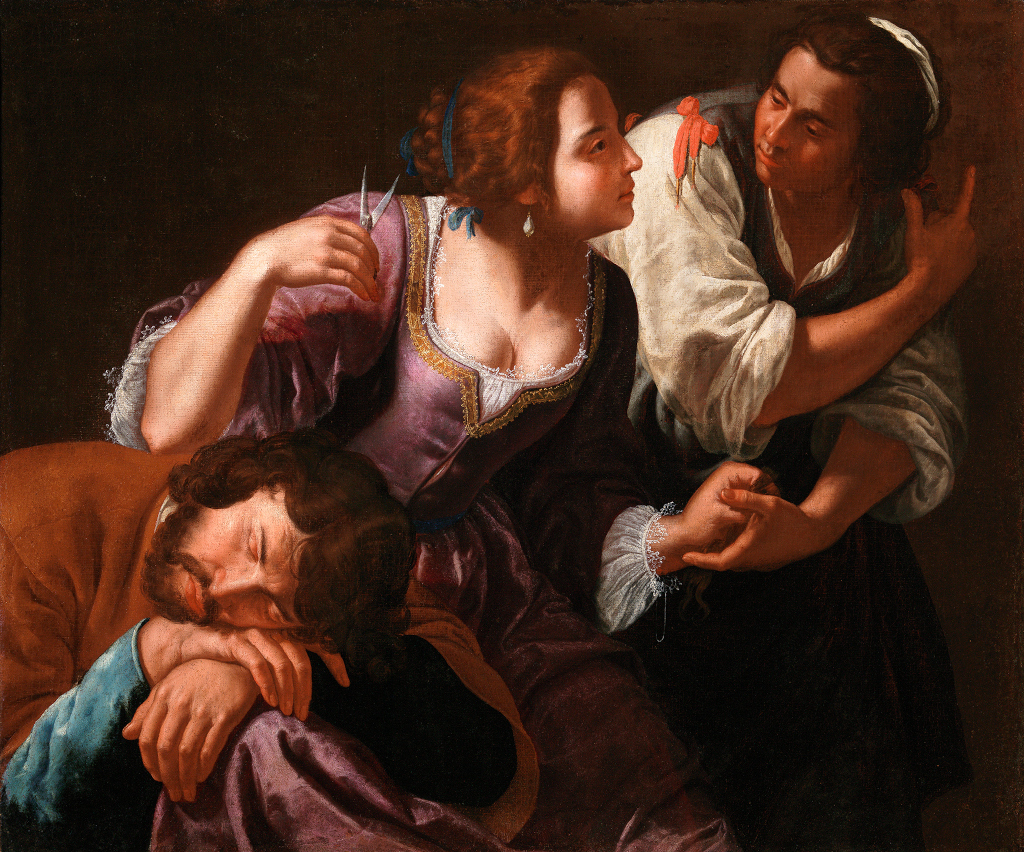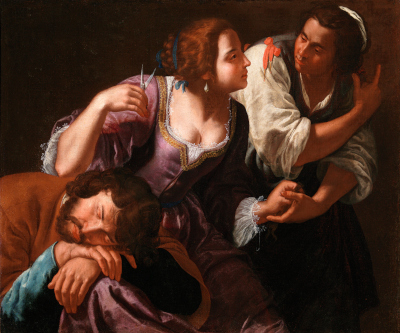Samson and Delilah was completed by Artemisia Gentileschi somewhere around the period of 1630 and 1638, which came towards the end of her career. It is believed to reside today within an Italian gallery in Naples.
Christian narratives had long been used to teach morality and warn of the dangers of not following the right path. Artists took them into their work many times during the Renaissance and Baroque eras, and Artemisia liked to re-imagine some of these tales by re-balancing them in favour of the female characters.
This particular piece is entirely typical of her trademark style, giving prominence to Delilah whilst incorporating the portraits amongst a darkened background. She was certainly inspired by Caravaggio, but still managed to forge her own path, both stylistically and also in the content that she covered.
Her legacy was reduced by mis-attributions but this is now starting to be corrected, with new artworks appearing within her oeuvre over the past century, having initially been passed off to members of her circle previously.
The Story of Samson and Delilah
This famous tale comes from the Old Testament and has inspired many artists from across the ages in their work. Typically, they all focus on Samson falling asleep upon Delilah, and his hair then being cut off. This famously leads to him losing his powers, leaving him weak and vulnerable.
In Gentileschi's version we see Delilah herself cutting his hair, or at least is holding the scissors. Another figure encourages her away, touching on the story in which she is bribed by the Philistines, who then capture Samson whilst he is weak. This artist loved to portray women in positions of power and strength, unlike her male counterparts, and this brought a unique quality to her work.
Artemisia herself took inspiration from a variety of sources, including other Christian themes as well as Greek and Roman mythology. She would re-visit her favourite subjects several times over, re-imagining them in different ways each time.
Description
As mentioned within our discussion of the story itself, this painting captures Delilah holding the scissors in her right hand, whilst being led away by another man. She looks alluring, and powerful, just as Artemisia liked to depict women within her paintings.
Delilah wears a revealing purple dress which features golden embroidery around the neckline. Her hair is red, and tidily arranged behind her head. Perhaps the artist saw herself, partially, within this portrait, but she herself had dark brown hair. Poor Samson is entirely unware of events whilst he sleeps peacefully, with his fate already sealed.
The composition features a diagonal direction, from the bottom left to the top right, which is often how the artist worked when using single portraits in reclined positions. In this case she manages to create the same shape using three figures together, whilst also including many elements from the original story.
Samson and Delilah Paintings by other Artists
Samson and Delilah by Peter Paul Rubens and Samson Captured by the Philistines by Giorgione are two of the more famous interpretations of this theme. The likes of Anthony van Dyck would also include it within their oeuvres, and Rubens himself produced a number of other versions across his career. You will notice from this list about the abundance of entries from the Baroque era, of which Artemisia herself was a contributor, and perhaps this period saw more interpretations of this theme than any other.
Large Image of Gentileschi's Samson and Delilah
We have added a larger image below of the original painting from 1630 to 1638. The style is typical of the artist, with the background darkened. It is perhaps slightly smaller than some of her other works, but only includes three figures, so works effectively in that format.
 Samson and Delilah
Samson and Delilah




